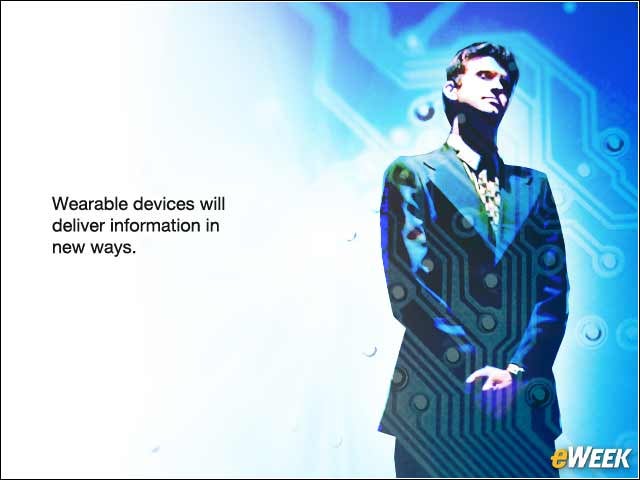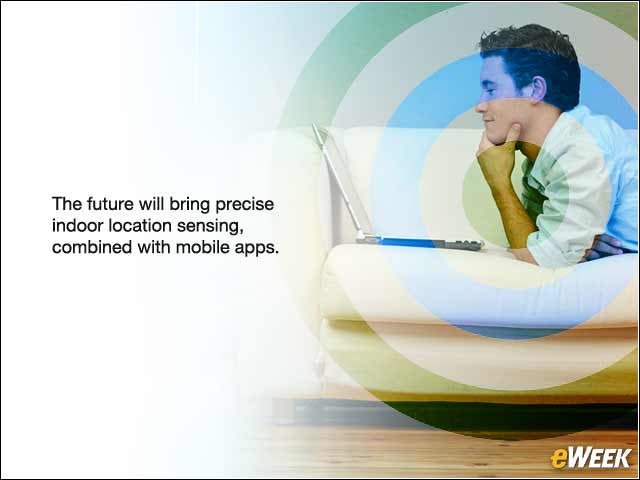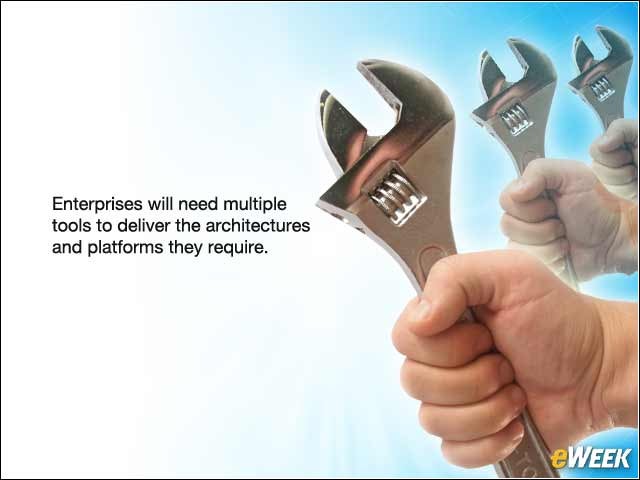eWEEK content and product recommendations are editorially independent. We may make money when you click on links to our partners. Learn More.
2Mobile-Connected Smart Objects Gain in Popularity
Smartphones and tablets will perform many functions, including acting as remote controls, displaying and analyzing information, interfacing with social networks to monitor “things” that can tweet or post, paying for subscription services, ordering replacement consumables and updating object firmware. Gartner predicts that by 2020, the average affluent household will contain several hundred smart objects, including LED light bulbs, toys, domestic appliances, sports equipment, medical devices and controllable power sockets.
3Wearable Devices Take Off
Gadgets as diverse as on-body health care sensors, smart jewelry, smartwatches, display devices (like Google Glass) and a variety of sensors embedded in clothes and shoes will communicate with mobile apps to deliver information in new ways and enable a wide range of products and services in areas such as sports, fitness, fashion, hobbies and health care. The smartphone will become the hub of this personal-area network of devices.
4Long Term Evolution Networks Become More Advanced
“Long Term Evolution (LTE) and its successor LTE Advanced (LTE-A) are cellular technologies that improve spectral efficiency and will push cellular networks to theoretical peak downlink speeds of up to 1G bps, while reducing latency,” Jones wrote. “All mobile users will benefit from improved bandwidth, and superior performance—combined with new features such as LTE Broadcast—will enable network operators to offer new services.”
5Enterprise Mobility Management Deemed Critical
EMM, which includes mobile-device management, mobile-application management, application wrapping and containerization, and some elements of enterprise file synchronization and sharing, is expected to become a critical element of software for organizations, especially as the proliferation of mobile devices further encourages BYOD policies across businesses large and small. These EMM tools are expected to mature, grow in scope and eventually address a wide range of mobile management needs across all popular OSes on smartphones, tablets and PCs.
6Monitoring Tools, Metrics Prove Critical for App Measurement
Tools for mobile metrics and monitoring, often known as application performance monitoring (APM), can help break performance bottlenecks that are hard to locate. These APM tools, available from companies like CA Technologies and Riverbed, provide visibility into app behavior, deliver statistics about which devices and OSes are adopted, and monitor user behavior to determine which app features are being successfully exploited.
7User Experience With Apps Becomes More Complex
The report notes leading consumer apps are already setting high standards for user interface design, and all developers must master new skills and work with new partners to meet growing user expectations. Exceptional user experiences, which are achieved by a variety of new techniques and methodologies, such as motivational design, “quiet” design and “playful” interfaces, will be essential in the ultracompetitive app marketplace.
8Increased WiFi Demands Spur Network Evolution
Over the next three years, demands on WiFi infrastructure will increase as more WiFi-enabled devices appear in organizations, as cellular offloading becomes more popular, and as apps such as location sensing demand denser access-point placement, leading to the need for an evolution in WiFi technology. Emerging WiFi standards such as 802.11ac (Waves 1 and 2), 11ad, 11aq and 11ah will increase WiFi performance, make WiFi more relevant to applications such as telemetry and enable WiFi to provide new services.
9Yes, Indeed, HMTL5 Will Still Be Around
Gartner predicts that despite many challenges, the HTML5 development platform will be an essential technology for organizations delivering applications across multiple platforms. However, the report also cautioned HTML5 won’t be a simple panacea for mobile application portability because it is fragmented and immature and therefore poses many implementation and security risks.
10Location Tracking to Become Far More Precise
Precise indoor location sensing, combined with mobile apps, will enable a new generation of extremely personalized services and information, which is what consumers of mobile apps (and ads) are already craving. Knowing an individual’s location to within a few meters is a key enabler of the delivery of highly relevant contextual information and services. Technologies like WiFi, Bluetooth, ultrasonic beacons and geomagnetics will all become more sophisticated. In the longer term, technologies such as smart lighting will also become important, Gartner said.
11Android, iOS and Windows Represent the Top Systems
Gartner’s portrait of the future of mobile applications has three faces—Google Android, Apple iOS and Microsoft Windows. Three application architectures (native, hybrid and mobile Web) are also expected to dominate well into the future. Thanks to this three-way split among operating systems and architectures, most large organizations will need a portfolio of several tools to deliver to the architectures and platforms they require, taking into account many technical and nontechnical complexities, such as productivity versus vendor stability.










